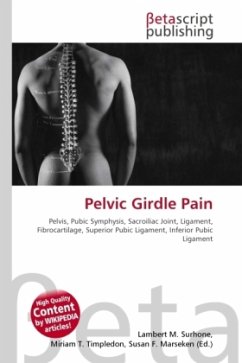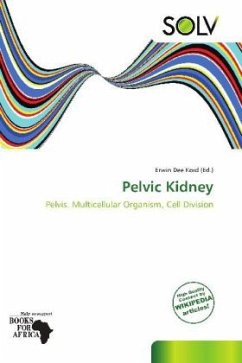
Pelvic Girdle Pain
Versandkostenfrei!
Versandfertig in 6-10 Tagen
23,99 €
inkl. MwSt.

PAYBACK Punkte
12 °P sammeln!
High Quality Content by WIKIPEDIA articles! Pregnancy related Pelvic Girdle Pain (PGP) causes pain, instability and limitation of mobility and functioning in any of the three pelvic joints. PGP has a long history of recognition, mentioned by Hippocrates. and later described in medical literature by Snelling. The pelvis is the largest bony part of the skeleton. There are three joints, the symphysis pubis (SP), and two sacroiliac joints. A highly durable network of ligaments surrounds these joints giving them tremendous strength. The pubic symphysis has a fibrocartilage joint which may contain a...
High Quality Content by WIKIPEDIA articles! Pregnancy related Pelvic Girdle Pain (PGP) causes pain, instability and limitation of mobility and functioning in any of the three pelvic joints. PGP has a long history of recognition, mentioned by Hippocrates. and later described in medical literature by Snelling. The pelvis is the largest bony part of the skeleton. There are three joints, the symphysis pubis (SP), and two sacroiliac joints. A highly durable network of ligaments surrounds these joints giving them tremendous strength. The pubic symphysis has a fibrocartilage joint which may contain a fluid filled cavity and is avascular; it is supported by the superior and arcuate ligaments. The sacroiliac joints are synovial, but their movement is restricted throughout life and they are progressively obliterated by adhesions. The nature of the bony pelvic ring with its three joints determines that no one joint can move independently of the other two.












